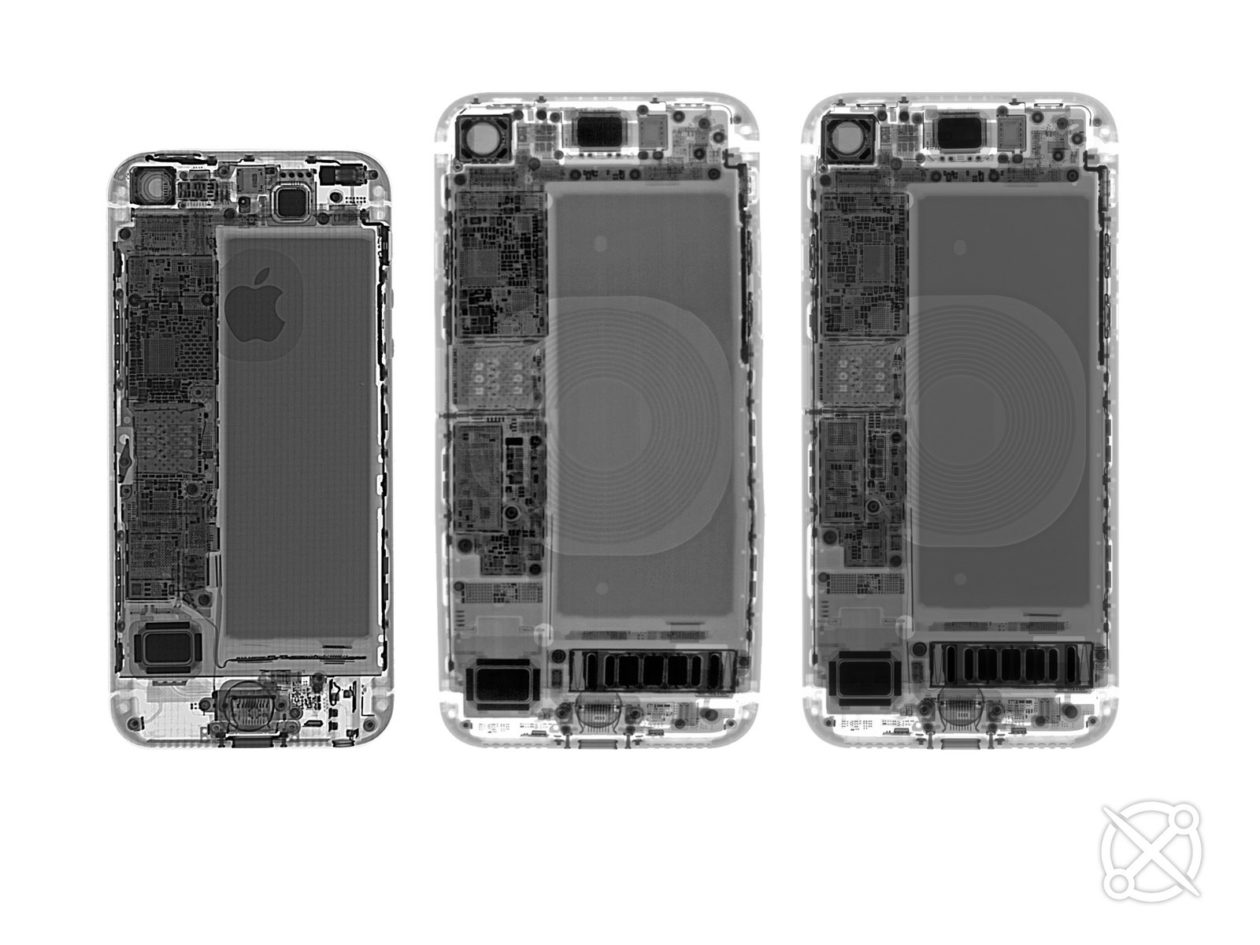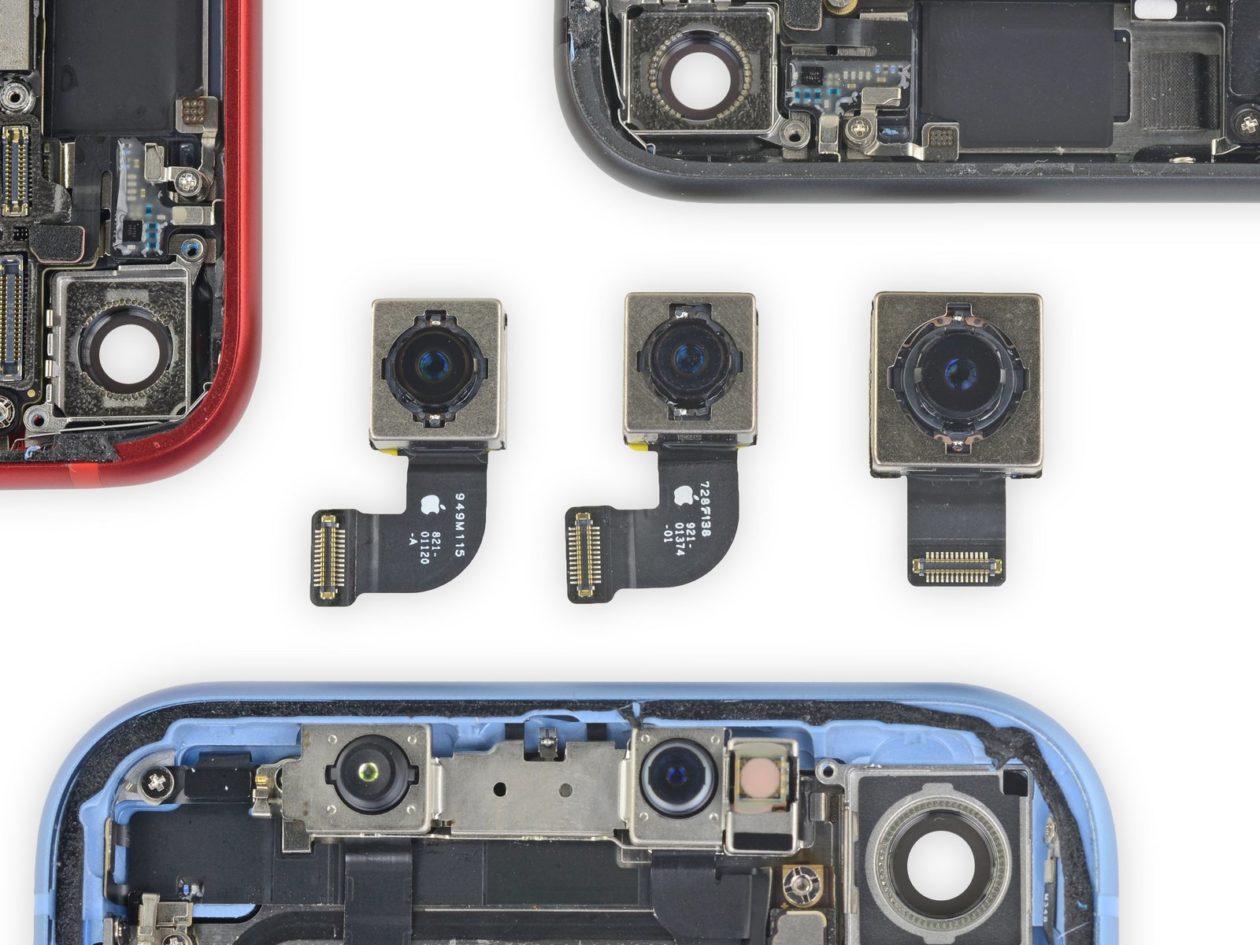Last week, we commented on the dismantling of new iPhone SE done by a YouTuber Chinese, which revealed few differences between the newly launched gadget and the iPhone 8, 2017.
Now, the iFixit also made available its teardown complete of the device, providing even more details on the comparison between the iPhone SE of the first, the new (second generation) and the 8.
Knowing the best known configurations of the new iPhone SE (A13 Bionic chip, 4.7 inch LCD display and single camera), let's check out some other details (not exactly indicated) of the device.
X-ray
Before opening the devices, iFixit compared the interior of both generations of iPhones SE and 8 using an X-ray image. The differences between the new SE and 8, of course, were minimal:

According to iFixit, in addition to a “subtle” rework of the antenna and the reorganization of some chips on the logic board, it is not possible to say that they have major changes in the availability of components.
What iFixit expected, however, was to see some change in the antenna layout, to boost the new Gigabit / LTE (MIMO) and Wi-Fi features, but there are no differences in that regard.
Drums
Some tests and analyzes have already shown that the battery of the new iPhone SE is practically identical to the 8, with the performance, in practice, being very similar.
In fact, iFixit reported that the battery capacity of the new SE is the same, 1.821mAh (reaching 6.96Wh in charging) more than the original iPhone SE (6.21Wh) and much less than the iPhone 11 (11.91Wh).

Finally, although the batteries correspond in size and capacity, the connector has changed which means that this part cannot be exchanged between the new iPhone SE and 8, unlike other components.
Camera
While discussions about the camera specifications of the new iPhone SE roll loose, iFixit just says the image sensor of the new SE physically smaller that of the XR they bet, therefore, that the camera is the same as the iPhone 8, but with processing improvements thanks to the power of the A13 Bionic chip.
 From left to right: new iPhone SE, iPhone 8 and iPhone XR.
From left to right: new iPhone SE, iPhone 8 and iPhone XR.The front camera (7MP) sensor of the new iPhone SE also appears to be identical to that of the iPhone 8, according to iFixit. With this, both the rear and front cameras of the devices can be exchanged, without any problem.
More details and interchangeable parts
Although the new iPhone SE and 8 have virtually identical screens, Apple has removed the module 3D Touch of the device launched this year. IFixit tested changing the display of the new iPhone SE for the 8 and found that 3D Touch does not work; the firm also pointed out that changing the display of devices without access to a screen programmer can cause some features to fail, such as the True Tone.
Contradictorily, however, with the removal of the 3D Touch module on the iPhone XR (and later), the screen of these devices got thinner, while the battery got thicker than what happened in the new SE, probably as a way to save even more. more in the production of gadget.

IFixit also realized that the Taptic Engine (iPhone vibrating motor) exactly the same as the 8 in the new SE, and can be exchanged with each other.
Another part that cannot be exchanged (despite being quite similar) is the Incio button (Home) with Touch ID integrated, which is actually applicable to the variety of devices that rely on this technology.
Final grade
For maintaining the repairability of some important parts / components (such as the screen and the battery) iFixit decided to give the new iPhone SE a note 6 on a scale that goes up to 10 (more repairable), the same as the iPhone 8 received in 2017.
The firm also pointed out that most components are modular and independently replaceable, including many parts that are compatible with the iPhone 8. Finally, the (glass) back of the new iPhone SE is fragile and practically impossible to repair.
via TechRadar, iMore
